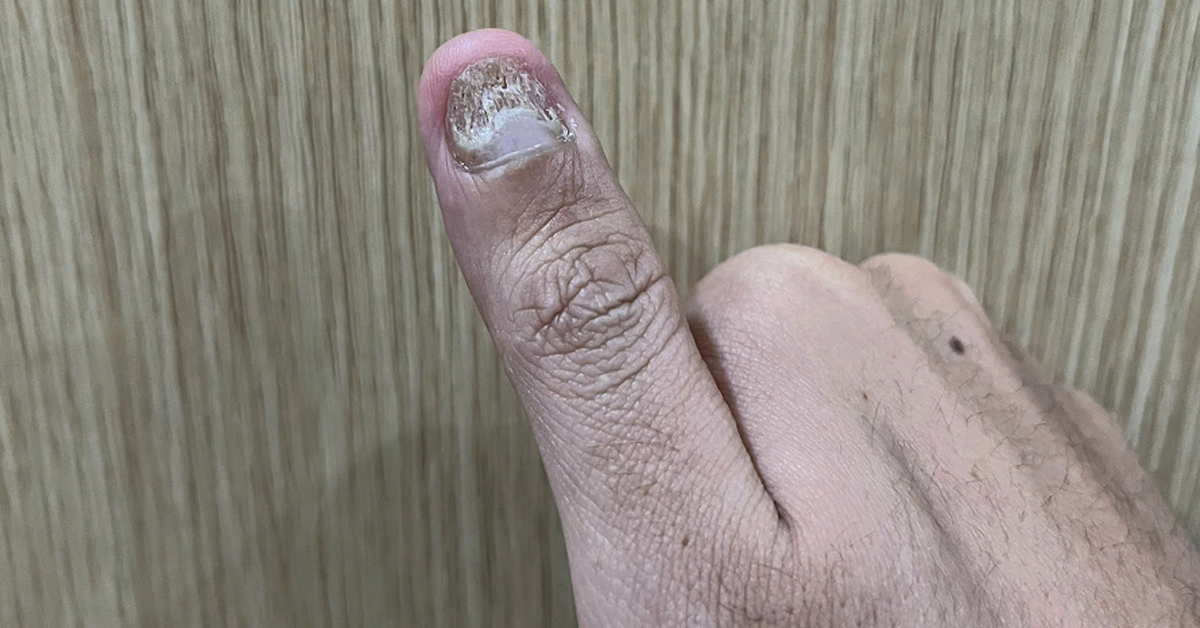Yellow skin, moles with unusual color and shape, drooping eyelids or swollen eyes are signs of liver disease, skin cancer, brain problems.
Yellow skin and eyes
This is an acute symptom of jaundice, when the body accumulates a lot of waste and red blood cells break down. Many other serious health problems can accompany jaundice, such as viral infections (hepatitis, mononucleosis), liver disorders, gallbladder, pancreas or cirrhosis.
Abnormal moles
Moles are usually nothing to worry about. However, if a mole changes color, shape, or size, you should see a dermatologist to check for skin cancer.

Unusual moles can warn of skin cancer. Photo: Freepik
Ulcer
Cold sores around the lips and mouth can be caused by the herpes virus type 1. The virus becomes active and develops symptoms such as cold sores when depressed, sick or tired. They usually go away on their own, but people can take medication if symptoms are severe.
Chapped lips
Dry or chapped lips are very common, especially in the winter. However, dry lips can also be a sign of a vitamin B deficiency, dehydration, allergies, or a reaction to medications such as steroids.
Droopy eyelids
Drooping eyelids can occur in one or both eyes. Severe drooping can obstruct vision. This symptom is usually harmless, but it can also signal a problem with the brain, nerves, or eye socket. If drooping is accompanied by double vision (seeing double), muscle weakness, difficulty swallowing, or a severe headache, it may be a sign of a stroke.
Yellow spots on eyelids
Xanthelasmas, also known as periocular xanthelasmas, are caused by deposits of cholesterol under the skin. They usually appear as orange-yellow patches or bumps on the skin of the upper or lower eyelids or in the corners of the eyes. The rash is painless, but it can indicate heart disease or a heart attack.
Puffy eyes
Hot and humid weather can cause the body to retain more water than usual, leading to puffy eyes. This condition can also be caused by lack of sleep, eating too much salty food, and hormonal changes. In some cases, puffy eyes are accompanied by redness and itching due to allergies to food, pollen, makeup, perfume, cleansers, or infections such as pink eye.
Melasma
Melasma occurs when melanin pigment cells overproduce, leading to the formation of dark patches or spots. This condition is common in women aged 20-50, especially during pregnancy and after giving birth. Melasma can darken and lighten over time, often becoming worse in the summer and lighter in the winter.
For prevention, you should apply sunscreen with SPF above 30 about 15-30 minutes before going out, combined with wearing a wide-brimmed hat, mask, sunglasses... You should change your lifestyle, avoid stress, use cosmetics with clear origin, do not contain skin-irritating ingredients.
Huyen My (According to WebMD, Times of India )
| Readers send dermatological questions here for doctors to answer |
Source link



![[Photo] Third meeting of the Organizing Subcommittee serving the 14th National Party Congress](https://vstatic.vietnam.vn/vietnam/resource/IMAGE/2025/4/2/3f342a185e714df58aad8c0fc08e4af2)

![[Photo] Relatives of victims of the earthquake in Myanmar were moved and grateful to the rescue team of the Vietnamese Ministry of National Defense.](https://vstatic.vietnam.vn/vietnam/resource/IMAGE/2025/4/2/aa6a37e9b59543dfb0ddc7f44162a7a7)



























































































Comment (0)